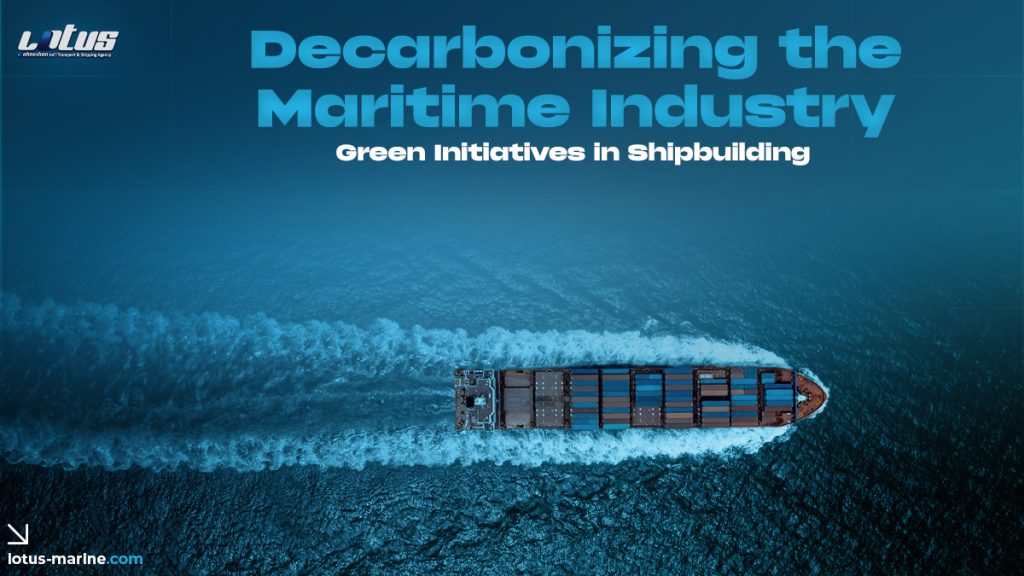Introduction
The maritime industry, responsible for transporting 90% of global trade, contributes approximately 3% of global carbon emissions. As concerns over climate change grow, stakeholders in the shipping sector are under pressure to adopt sustainable practices. Green initiatives in shipbuilding are emerging as a crucial pathway to decarbonizing this vital industry.
Understanding Carbon Emissions in Maritime Transport
Contribution of the Maritime Industry to Global Emissions
The maritime industry emits significant levels of CO2, sulfur oxides (SOx), and nitrogen oxides (NOx), largely due to the heavy reliance on fossil fuels.
Key Sources of Carbon Emissions in Ships
- Fuel Consumption: Heavy fuel oil used in engines is a major pollutant.
- Inefficient Designs: Older vessels with outdated technology consume more fuel.
The Push for Decarbonization
Regulatory Pressures
The International Maritime Organization (IMO) mandates a 40% reduction in CO2 emissions per transport work by 2030. Regional initiatives, such as the European Union’s Emissions Trading System, add further incentives.
Market Demand for Sustainable Practices
Shippers and consumers increasingly prefer eco-friendly supply chains, driving demand for greener ships.
Green Technologies in Shipbuilding
Low-Emission Fuel Alternatives
- LNG: A cleaner-burning fuel reducing SOx and particulate matter.
- Methanol and Biofuels: Renewable options gaining traction for their lower carbon footprint.
Hydrogen-Powered Vessels
Hydrogen fuel cells produce zero emissions, making them a promising solution for the future.
Electric and Hybrid Ships
Battery-powered vessels are ideal for short routes, while hybrids combine traditional engines with electric propulsion.
Innovations in Design and Construction
Lightweight Materials
Composite materials reduce vessel weight, improving fuel efficiency.
Optimized Hull Designs
Hydrodynamic designs minimize drag, cutting fuel consumption by up to 20%.
Smart Ship Technology
IoT and AI enable real-time monitoring and optimization of fuel use, reducing waste.
Retrofitting Existing Ships
Benefits of Retrofitting Over New Builds
Retrofitting extends the life of existing vessels while reducing emissions, making it a cost-effective option.
Upgrading Engines and Fuel Systems
Installing energy-efficient engines and alternative fuel systems can significantly cut emissions.
Adding Renewable Energy Solutions
Solar panels and wind-assisted propulsion provide additional energy savings.
Challenges in Implementing Green Shipbuilding
High Initial Costs
Green technologies require significant upfront investments.
Lack of Infrastructure for Alternative Fuels
Limited refueling stations for LNG, hydrogen, and electric power hinder adoption.
Knowledge Gaps in Emerging Technologies
Shipbuilders and operators need training to implement new systems effectively.
Global Collaboration for Green Maritime Practices
Partnerships Between Governments and Industry
Collaboration is key to sharing costs and resources for sustainable development.
Role of Research and Development
Investment in R&D accelerates the development of innovative technologies.
Funding and Incentive Programs
Subsidies, tax incentives, and grants encourage adoption of green practices.
Future Trends in Green Shipbuilding
Autonomous Green Vessels
Combining automation with sustainability offers exciting prospects for efficiency.
Increased Use of Renewable Energy
Solar sails and other renewable solutions are becoming mainstream.
Circular Economy in Ship Recycling
Reusing materials from decommissioned ships reduces waste and conserves resources.
Conclusion
Decarbonizing the maritime industry through green shipbuilding is not just an environmental imperative but also a business opportunity. By adopting innovative technologies and practices, the industry can ensure a sustainable future while meeting regulatory and market demands.
FAQs
- What are the main challenges of decarbonizing the maritime industry?
High costs, limited infrastructure, and technical knowledge gaps. - How do hydrogen-powered ships work?
They use fuel cells to convert hydrogen into electricity, producing zero emissions. - Why is retrofitting existing ships important?
It reduces emissions cost-effectively without requiring new builds. - What is the role of governments in promoting green shipbuilding?
Governments provide regulations, incentives, and funding to support sustainable practices. - How can the public support maritime decarbonization efforts?
By advocating for sustainable practices and choosing eco-friendly shipping options.







